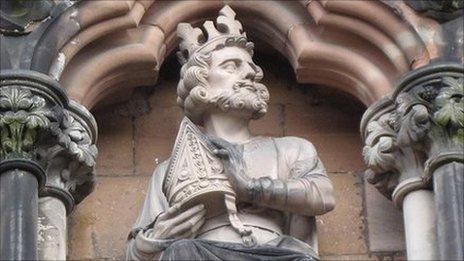Staffordshire Hoard: 'Anglo-Saxons made gold appear more golden'
- Published
The hoard was discovered in a field near Hammerwich in 2009
Anglo-Saxon goldsmiths knew how to treat gold to make it appear more golden, fresh research has revealed.
Analysis of the Staffordshire Hoard showed goldsmiths knew how to remove alloyed metals such as copper and silver from the surface of objects.
The finding exposes the flaws in archaeological methods used to calculate an object's gold content by analysing its surface, experts said.
It comes as a new display of the items opened in Birmingham.
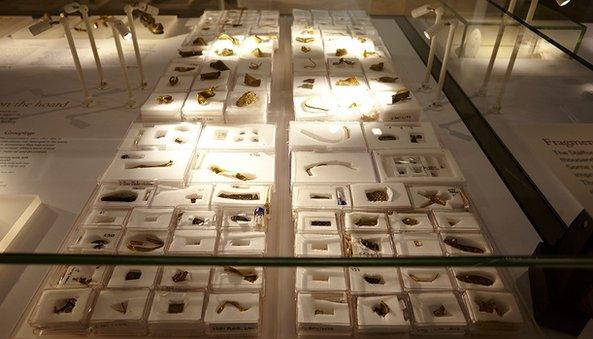
About 300 items from the 4,000-piece collection have gone on show.
"Relatively little is known about Anglo-Saxon goldsmithing, but achieving this surface treatment would have been a skilled task, one we now know they were familiar with," a museum spokesman said.
About 200 objects were scanned using X-ray technology to determine their elemental composition during the British Museum study.
Gold was highly valued in Anglo Saxon society and may also have been believed to have magical or sacred qualities.
It is not known how the inferior metals were removed.
About 300 items from the 4,000-piece collection - the UK's largest find of Anglo-Saxon objects - have gone on show at Birmingham Museum and Art Gallery.
The museum received £700,000 in lottery funding last year to create the display.
It explains the history behind the items and how they were used before they were buried 1,400 years ago.
Birmingham Museums director Ellen McAdam said: "The Staffordshire Hoard is one of Birmingham's most popular collections and this new gallery will give visitors an even greater access to this unique find."
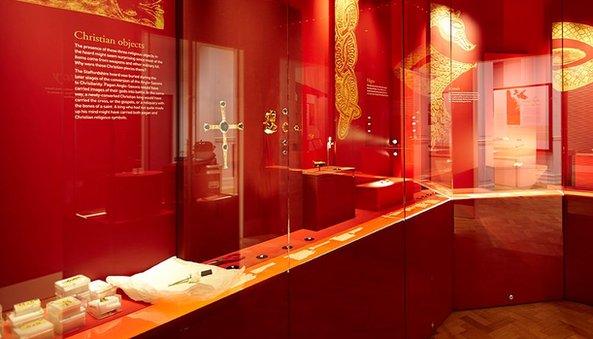
The new exhibition explains the history behind some of the items discovered in a field near Hammerwich
The original hoard was discovered in a field near Hammerwich in 2009 by Terry Herbert before further items were excavated by archaeologists in 2012.
It consists of gold, silver and garnet decorative fittings dating back to the 7th Century, including pieces of swords and other weaponry.
The complete collection - which was valued at £3.2m - is jointly owned by Birmingham City Council and Stoke-on-Trent City Council.
A selection of items from the hoard drew large crowds when it first went on display, external in September 2009.
Other items are on display at the Potteries Museum in Stoke-on-Trent, Lichfield Cathedral and Tamworth Castle.
- Published12 March 2014
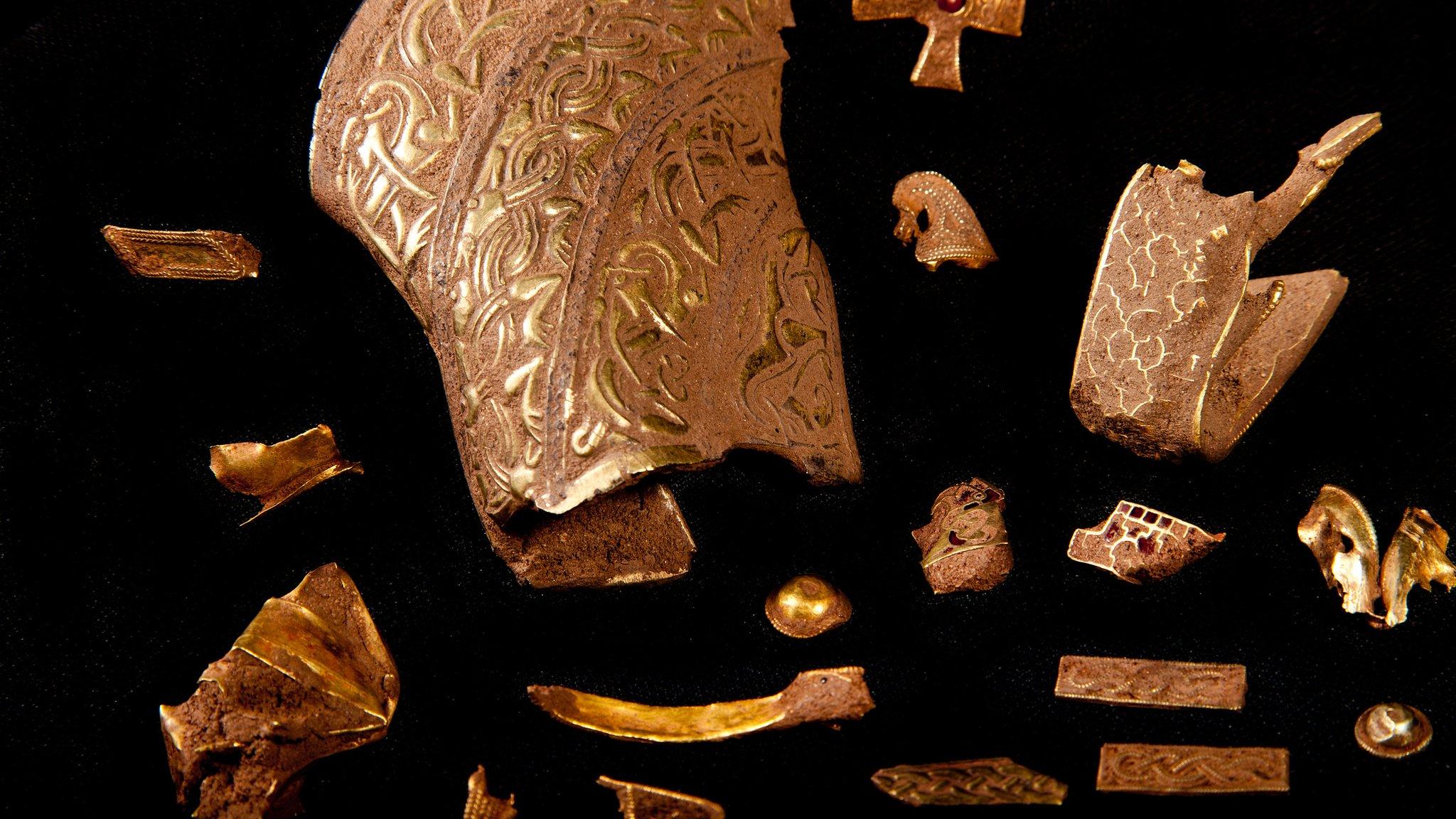
- Published4 January 2013
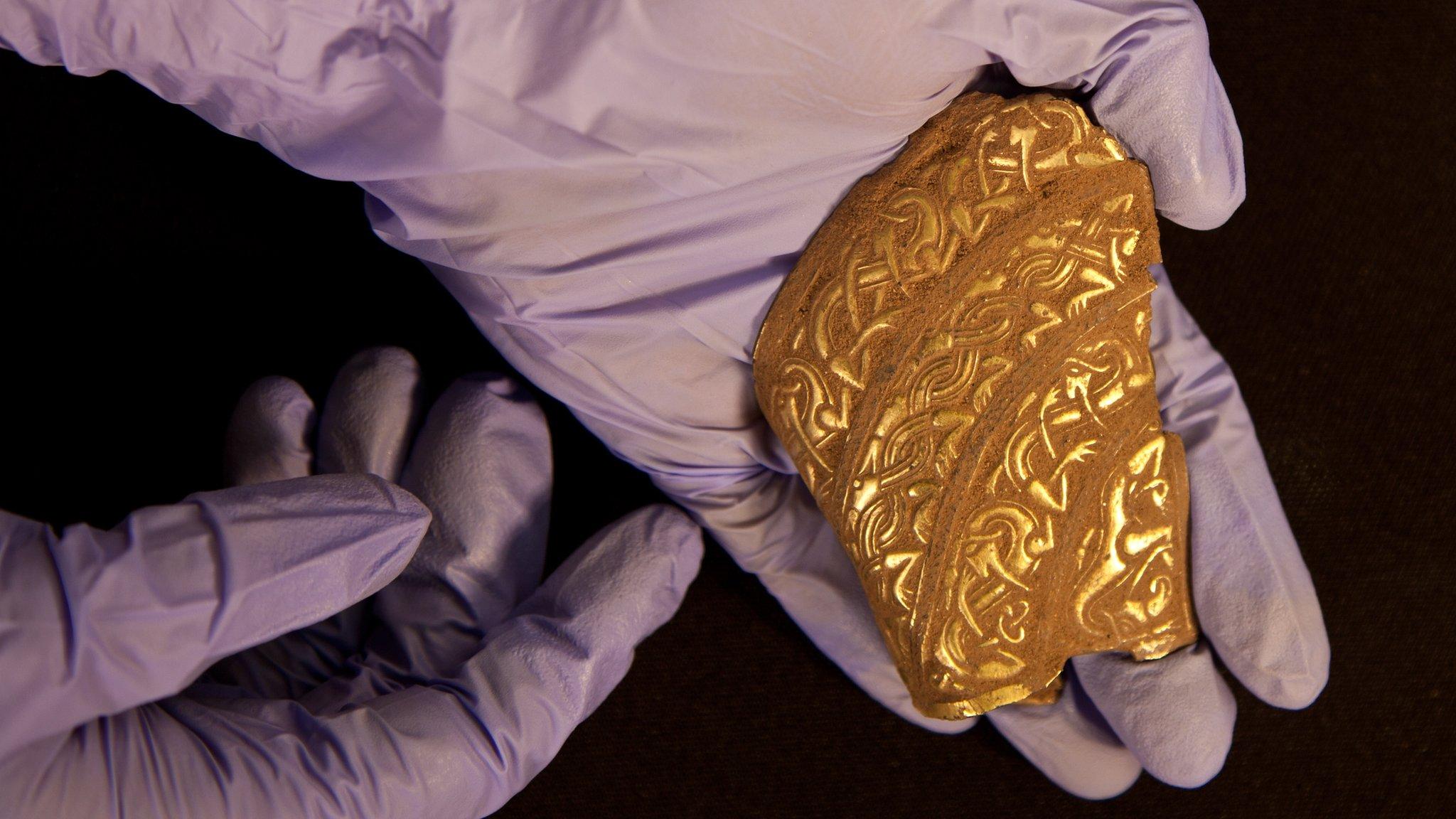
- Published25 December 2012

- Published18 December 2012
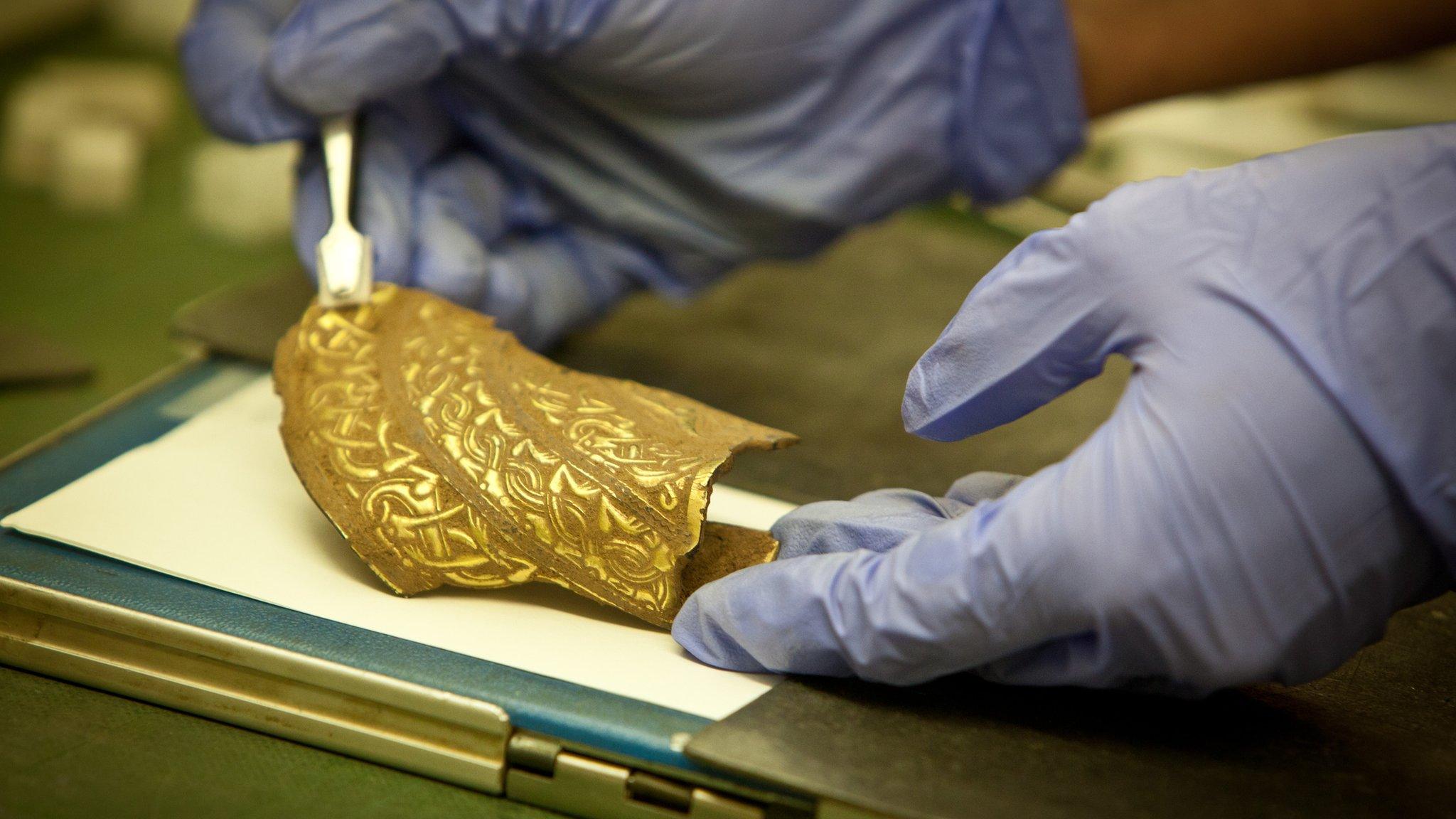
- Published18 December 2012
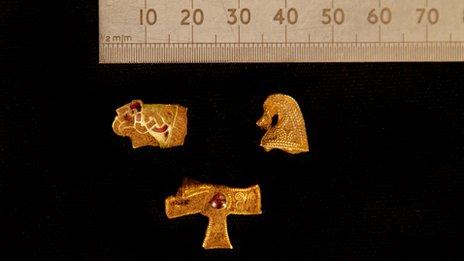
- Published29 October 2011
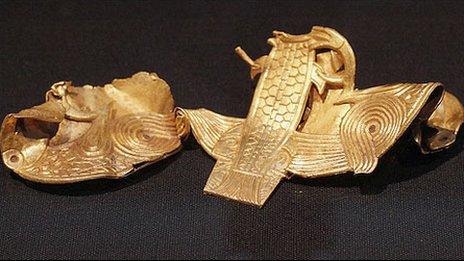
- Published3 July 2011
- Published16 April 2011
